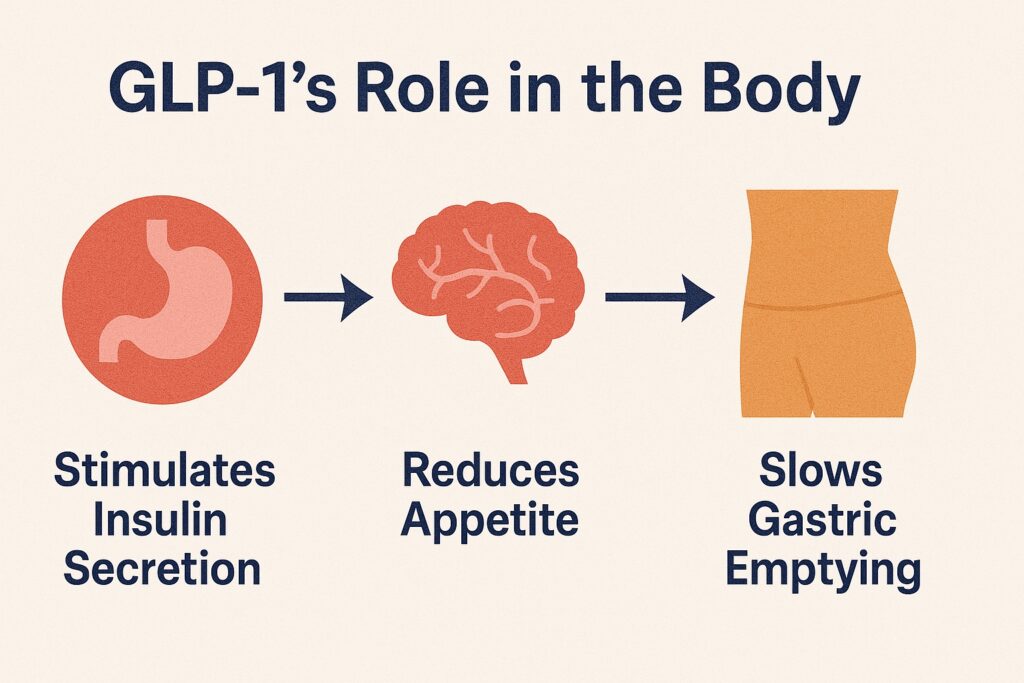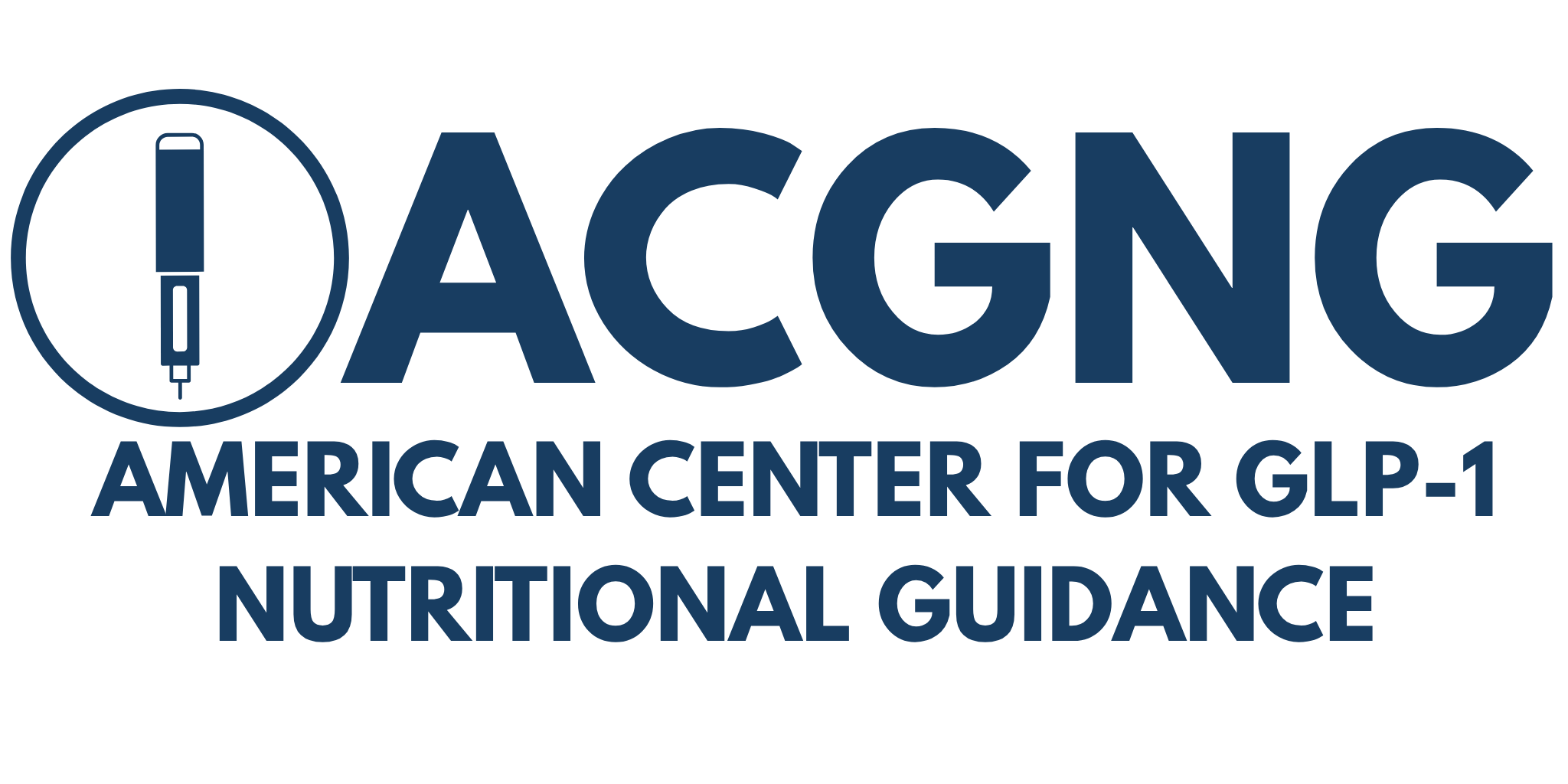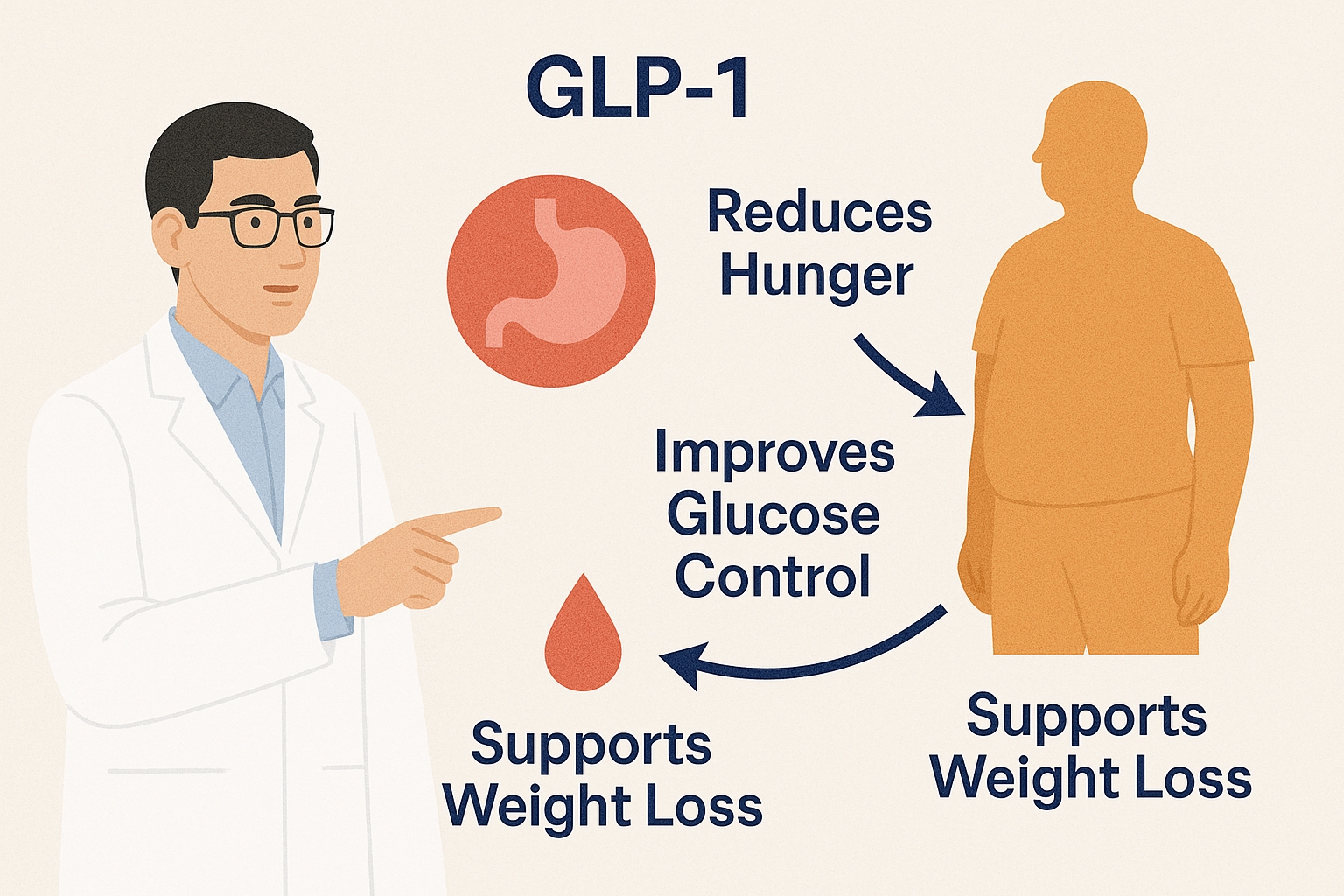Table of Contents
- Introduction
- GLP-1’s Role in the Body
- How GLP-1 Affects Metabolism and Appetite
- How GLP-1 Medications Mimic This Process
- Scientific References
Introduction
GLP-1 is a hormone secreted naturally by the intestines in response to eating. It acts on multiple organs to help the body manage blood sugar, slow digestion, and reduce appetite. These effects are why GLP-1 receptor agonist medications are now widely used for treating type 2 diabetes and obesity.
GLP-1’s Role in the Body
After you eat a meal, GLP-1 is released by L-cells in your small intestine. It acts on several key areas:
- Pancreas: Increases insulin secretion in response to rising glucose levels.
- Pancreas (α-cells): Suppresses glucagon, a hormone that raises blood sugar.
- Stomach: Slows gastric emptying, delaying how quickly food leaves the stomach.
- Brain: Signals fullness and reduces appetite via the hypothalamus.

How GLP-1 Affects Metabolism and Appetite
The combined effect of GLP-1’s actions helps lower post-meal blood glucose, reduce hunger, and promote feelings of satiety. This makes it especially useful for:
- Improving glucose control in people with type 2 diabetes
- Reducing calorie intake and supporting weight loss
- Preventing large glucose spikes after meals
However, the natural GLP-1 hormone is rapidly broken down in the body—usually within 2 minutes—by the enzyme DPP-4. This limits its usefulness in therapeutic doses unless extended pharmacologically.
How GLP-1 Medications Mimic This Process
GLP-1 receptor agonists (e.g., semaglutide, liraglutide) are synthetic compounds that mimic the effects of natural GLP-1 but are designed to last much longer—anywhere from 12 hours to a full week, depending on the formulation.
These medications bind to GLP-1 receptors throughout the body, activating them in a controlled and sustained way. Benefits may include:
- Reduced appetite and caloric intake
- Weight loss ranging from 5% to 15% or more over several months
- Lower fasting and post-meal glucose levels
- Potential cardiovascular benefits (studied in high-risk populations)
Because they extend and amplify natural GLP-1 activity, these medications help many individuals lose weight more effectively than through diet and exercise alone—particularly when paired with nutritional and behavioral support.
Scientific References
- Drucker DJ. “Mechanisms of Action and Therapeutic Application of GLP-1.” Cell Metabolism. 2018;27(4):740–756.
- Marso SP et al. “Liraglutide and Cardiovascular Outcomes in Type 2 Diabetes.” New England Journal of Medicine. 2016;375:311–322.
- Blundell JE et al. “Mechanisms of appetite and weight regulation: GLP-1 and beyond.” Obesity Reviews. 2021;22(Suppl 1):e13110.
- American Diabetes Association. “Incretin-Based Therapies.” Diabetes Care. 2024;47(Suppl 1).
This content is part of the GLP-1 Basics section from the American Center for GLP-1 Nutritional Guidance (ACGNG). It is provided for educational purposes only and does not substitute for professional medical advice.

